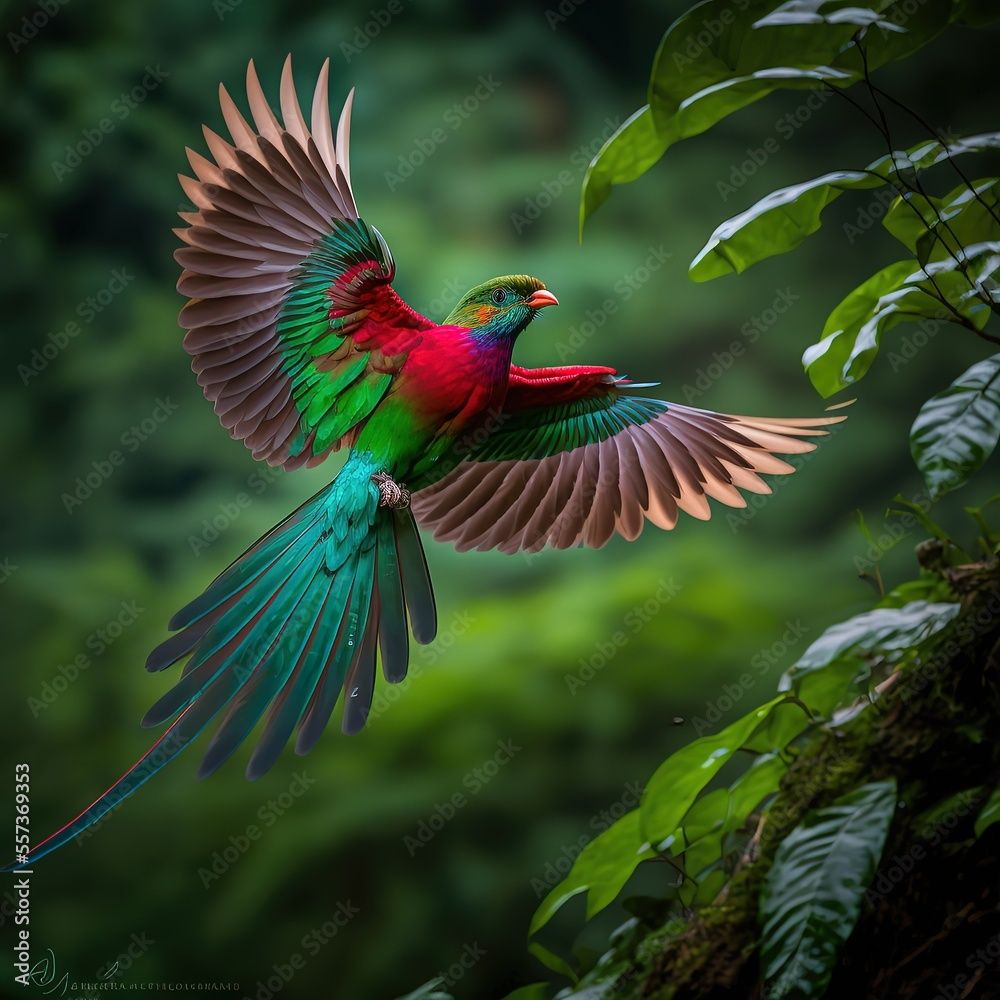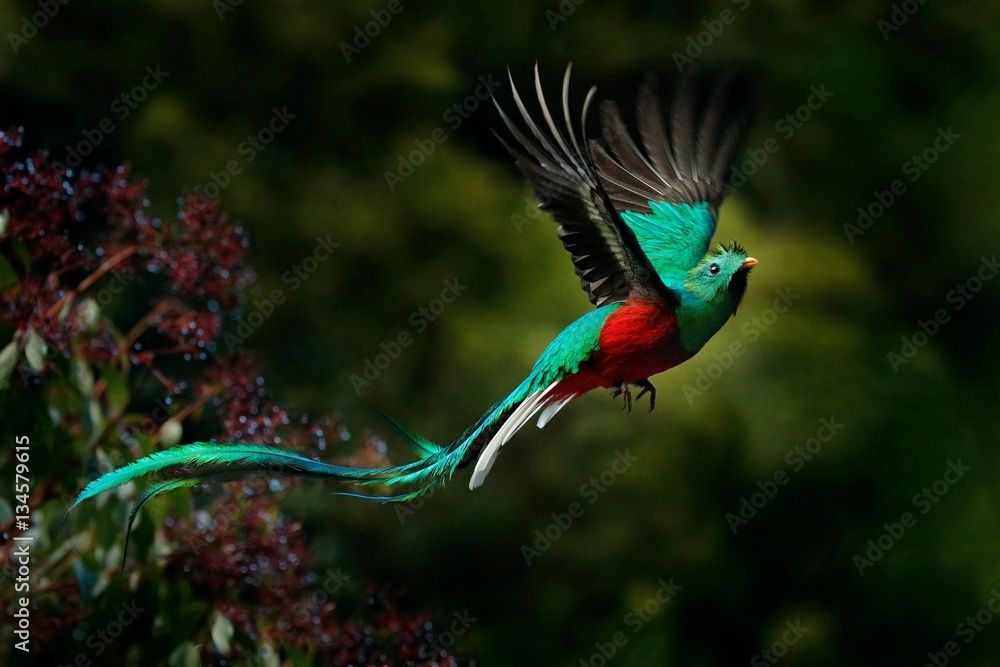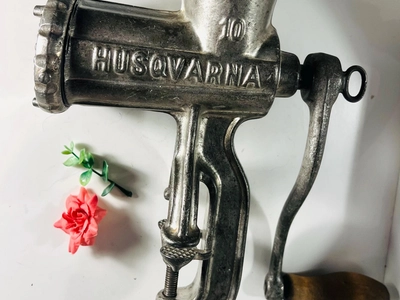The Truth Behind That "Terrifying" Bird Photo Everyone's Sharing
Scroll through Facebook for five minutes and you'll see it: a dark silhouette with impossibly long tail feathers cutting through an overcast sky. The comments are already pouring in. "What IS that thing?" "Looks like a pterodactyl!" "Is this even real?" "This can't be natural!"
Welcome to 2024, where a simple bird photograph can send thousands into a frenzy of speculation, fear, and wild theories. But here's the kicker – that "mysterious creature" causing all the panic? It's just a Resplendent Quetzal doing what it's done for millions of years: being absolutely magnificent.
The Anatomy of Viral Panic
We've created a world where our first instinct isn't wonder – it's worry. A stunning wildlife photograph hits social media, and within hours, the comment sections become battlegrounds between conspiracy theorists, amateur ornithologists, and people convinced they're witnessing evidence of genetic experiments gone wrong.
The Quetzal photograph is a perfect example. Its dramatic silhouette against stormy skies creates an almost mythical appearance. Those impossibly long tail feathers – which can reach up to three feet in males – look otherworldly when captured mid-flight. Add some atmospheric lighting and suddenly you've got thousands of people convinced they're looking at everything from an escaped lab creation to proof of ancient creatures still roaming our skies.
Why We're Wired to Fear the Unknown
There's something deeply human about our reaction to unusual wildlife imagery. Our brains, still operating on ancient survival programming, flag anything unfamiliar as potentially dangerous. When we see a bird that doesn't match our mental catalog of "normal" backyard species, alarm bells start ringing.
But here's what's really happening: we've become so disconnected from the natural world that genuinely spectacular wildlife looks fake to us. The Resplendent Quetzal, with its iridescent green plumage and trailing tail feathers, seems too extraordinary to be real. We've lost touch with just how incredible nature actually is.
The Social Media Echo Chamber Effect
Once that first confused comment appears – "OMG what is this thing?!" – the algorithm takes over. Engagement breeds more engagement. Fear spreads faster than facts. Before anyone bothers to do a simple reverse image search or consult basic ornithological resources, the photo has been shared thousands of times with increasingly dramatic captions.
"Mysterious creature spotted over Costa Rica!" "Scientists baffled by unusual bird-like entity!" "Is this proof of genetic manipulation?"

Meanwhile, any wildlife photographer or birding enthusiast could identify it immediately: it's a male Resplendent Quetzal, probably photographed in the cloud forests of Central America, doing exactly what these birds have done since the Pleistocene epoch.
The Real Story Behind the "Monster"
The Resplendent Quetzal isn't just any bird – it's considered one of the most beautiful birds in the world. Ancient Mayans and Aztecs revered it as sacred, associating it with the god Quetzalcoatl. Its tail feathers were more valuable than gold, and killing one was punishable by death.
These birds are notoriously difficult to photograph. They live in dense, misty cloud forests at high altitudes. They're shy, elusive, and their feeding habits are unpredictable. Getting a clear shot of one in flight, with those magnificent tail feathers fully displayed, is the wildlife photography equivalent of winning the lottery.
So when such a photograph surfaces, it should be celebrated as a rare glimpse into one of nature's most spectacular displays. Instead, we've trained ourselves to be suspicious of beauty.
The Deeper Problem: Nature Deficit Disorder
This phenomenon reveals something troubling about our relationship with the natural world. We've become so urbanized, so removed from wildlife, that authentic biodiversity looks suspicious to us. We're more familiar with CGI creatures from movies than real animals in their natural habitats.
When a genuinely remarkable species like the Quetzal appears in our feeds, our first response isn't appreciation – it's skepticism. We've created a world where the extraordinary seems impossible, where nature's actual achievements pale in comparison to our fictional creations.
Breaking the Cycle of Viral Misinformation
Here's a radical idea: what if our first response to unusual wildlife photography was curiosity instead of conspiracy? What if instead of asking "Is this real?" we asked "What species is this?" What if we spent thirty seconds researching before resharing?
The tools are literally at our fingertips. Reverse image searches, birding apps, wildlife identification websites – all available instantly. But we've become addicted to the drama of the unknown, preferring the thrill of mystery to the satisfaction of knowledge.

The Beauty We're Missing
While everyone's debating whether that Quetzal photo shows evidence of genetic manipulation or AI generation, they're missing the real story: we live on a planet populated by creatures so beautiful, so perfectly adapted, so utterly remarkable that they seem too good to be true.
The male Resplendent Quetzal's tail feathers grow up to three feet long during breeding season. They molt and regrow them annually. They feed primarily on wild avocados and other fruits, playing crucial roles in forest ecosystem maintenance. They're living jewels, evolution's masterpiece, deserving of awe rather than suspicion.
What This Says About Us
The viral panic over routine wildlife photography reveals our collective nature deficit syndrome. We've created indoor lives so divorced from natural wonder that when real biodiversity crosses our screens, it triggers our fake-detection instincts instead of our appreciation reflexes.
We're raising generations who know more about fictional creatures than real ones, who can identify every Marvel character but couldn't pick a Quetzal out of a lineup if their lives depended on it.
The Path Forward
The solution isn't complicated, but it requires a fundamental shift in how we engage with viral content. Before sharing that "mysterious creature" photo, take sixty seconds to research. Use your smartphone for knowledge instead of speculation. Choose wonder over worry.
Better yet, get outside. Visit national parks. Go birding. Experience the natural world firsthand. When you've seen genuine biodiversity in action, when you understand just how remarkable real animals actually are, you'll be less likely to mistake authentic wildlife for hoaxes or harbingers of doom.
The next time a dramatic bird photograph crosses your timeline, remember: the most likely explanation isn't conspiracy, genetic manipulation, or digital fakery. It's probably just another reminder that nature is far more spectacular than anything we could ever imagine – and that's exactly as it should be.
Mother Nature doesn't need our panic. She needs our respect, our protection, and occasionally, our ability to simply shut up and appreciate the show.



